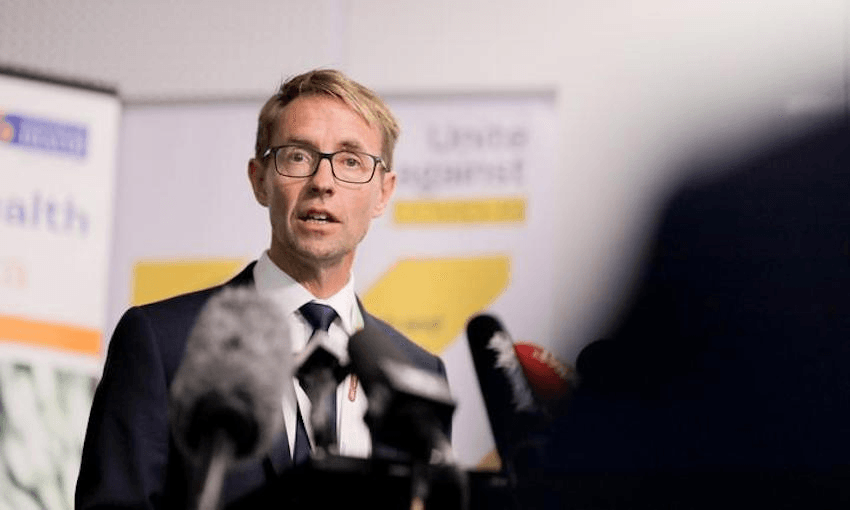In the worst-case scenario modelled, almost 150,000 New Zealanders would be hospitalised with Covid-19 and more than 35,000 would lose their lives.
The Ministry of Health has released its mathematical models that project the severity of the Covid-19 outbreak based on different measures imposed on the populous. The modelling delivers “a clear warning of the consequences of not acting swiftly and decisively”, it said.
The worst-case scenario, predicated on a failed eradication strategy and the undetected spread since the start of March, would see the outbreak peaking in early July 2020, with 3.32 million New Zealanders getting symptomatic illness and 146,000 sick enough to require hospital admission. More than 36,600 would require critical care in an ICU, and 27,600 would be expected to die, finds the paper for the Ministry of Health, delivered on March 24.
“As per previous reports, 89% of deaths would be in the 60+ age-group and there would be likely mortality gradients by ethnicity (higher in Māori and Pacific peoples) and by socio-economic position (higher in those living in deprived areas). This death toll would far exceed the death toll for NZ from World War One (18,000 deaths) and from the 1918 influenza pandemic (9000 deaths),” summarised Nick Wilson of the University of Otago (Wellington).
Wilson noted that “this plausible worse case analysis still assumes a functioning ICU capacity that saves 25% of those who need ICU care. This may still be optimistic as in severe overload situations there may be rate limiting steps such as the supply of ventilators. In other worse case scenarios hospital staff could go on strike if shortages of personal protective equipment (PPE) developed – further disrupting care.”
It’s important to stress that this is a worst-case scenario – one of many scenarios the ministry sought, and is based on a total failure of the eradication strategy. It is not a forecast. “It’s critical to understand that each of the models presents a number of potential future scenarios, none of which are future predictions” said Ashley Bloomfield, the director-general of health.
Another paper for the ministry concludes: “If New Zealand fails with its current eradication strategy toward Covid-19, then health outcomes for New Zealand could be very severe. If interventions were intense enough however, in some scenarios the epidemic peak could still be suppressed or pushed out to the following year (at which time a vaccine may be available). Due to the high levels of uncertainty with some of the parameters used in this modelling work, it should be regularly repeated as new information on the epidemiological characteristics of Covid-19 become available.”
Among the considerations is the impact of the onset of winter. “Winter conditions are known to accelerate transmission of influenza and also the other coronaviruses which cause common cold-like symptoms,” note the authors.
“Even though there are many uncertainties relating to seasonality and this novel coronavirus, it seems prudent to assume some seasonal fluctuation so we increased the average by 25% in winter and reduced it by 25% in summer.”
Speaking at the special parliamentary Epidemic Response Committee this morning, the health minister, David Clark, said that modelling suggested that, despite the measures introduced, “we continue to face a major challenge to avoid tens of thousands of deaths.”
He said that on the basis of the models, even a 25% drop in contacts between New Zealanders would see 1.1 million become ill and 12,700 deaths. A drop in half in contacts would see those numbers drop, respectively, by 250,000 and 4,000.
“The modelling shows that without the actions currently being taken, the uncontrolled spread of Covid-19 would exact a high price in New Zealand in terms of its impact on our health services, including our intensive care units, and deaths,” said Bloomfield in a statement.
He added that even with the alert level four measures in place, “the modelling is still predicting there could be a heavy toll on our health system and loss of life. That shows how seriously we need to take the virus, stick to the rules of the lockdown and maintain measures that reduce the risk of the virus entering the country.”
The ministry says the modelling informed its advice to government along with “a range of other information”.
The reports were compiled by the University of Otago based in Wellington, together with colleagues from Germany, with input and feedback from the Ministry of Health’s chief science adviser and public health officials.
“The key value of modelling like this is to assist with planning and decision making at an early stage – when prevention measures can have greater effect – and along with a range of other information, modelling can guide decision makers,” he said.
“There is broad support from the modelling that containing the spread of the disease is crucial to reduce and delay the impacts of the epidemic on human health and to allow health systems to prepare.”
Other key information sources were the February WHO joint mission to China, the University of Auckland report, and the March 18 publication from Imperial College, London, “which was particularly significant in informing the development of New Zealand’s alert levels and the decision to move quickly from alert level three to alert level four.”


